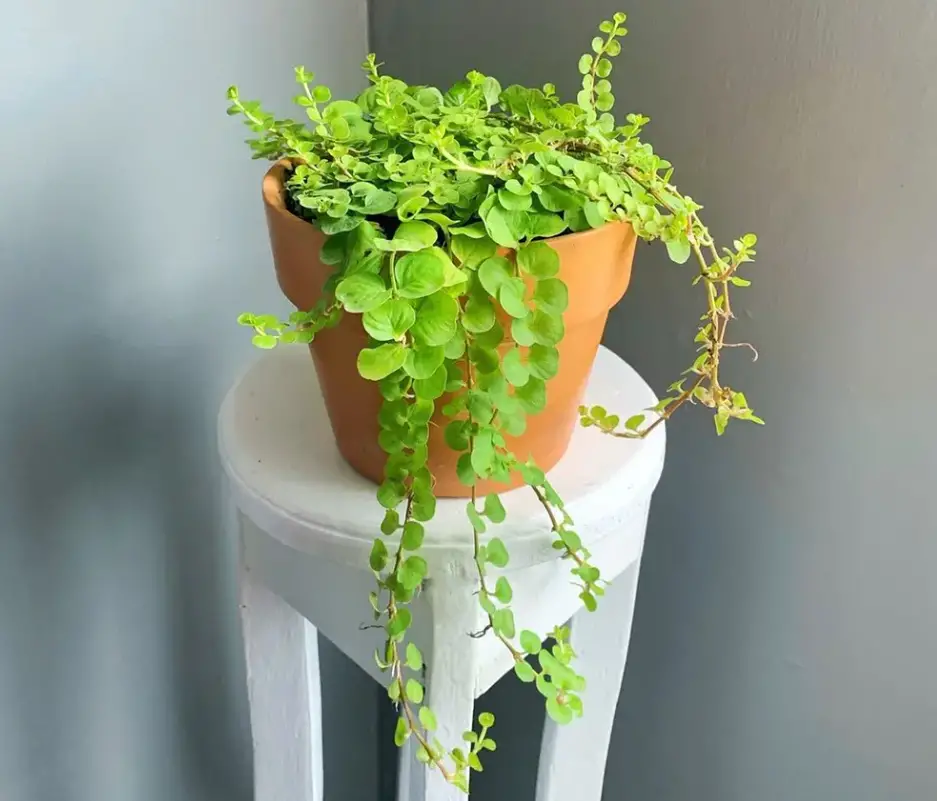Creeping Jenny, commonly known as moneywort, is a delightful perennial characterized by its bright yellow flowers and coin-shaped leaves. While the blooms may be short-lived, their beauty adds charm to landscapes. This low-growing “creeper” is primarily sought after for its lush, ground-covering foliage. It’s often mistaken for creeping Charlie, which showcases small purple flowers instead of Jenny’s sunny yellow.
Why Choose Creeping Jenny?

Creeping Jenny is a low-maintenance and easy-to-grow plant that can be viewed as a nuisance due to its vigorous growth. However, with proper management, it becomes a stunning addition to various outdoor spaces. When planted in spring, you’ll witness its vibrant greenery branch out, enhancing the visual appeal of borders and softening harsh lines with its graceful, scalloped vines.
To keep its growth in check, consider using containers for Creeping Jenny. This method allows you to enjoy its elegance without risking it becoming overly invasive. This perennial belongs to the primrose family and is hardy in USDA zones 4 through 9.
Creeping Jenny Quick Facts
- Common Name: Creeping Jenny, Moneywort, Herb Twopence, Twopenny Grass
- Botanical Name: Lysimachia nummularia
- Family: Primulaceae
- Plant Type: Evergreen ground cover
- Mature Size: 2-4 inches tall, 12-18 inches wide
- Sun Exposure: Full sun to partial shade
- Soil Type: Well-draining (sandy, loamy, or clay)
- Soil pH: Acidic, alkaline, or neutral
- Bloom Time: Summer
- Flower Color: Yellow
- Hardiness Zones: 4-9 (USDA)
- Native Area: Asia, Europe
Creeping Jenny Care
While Creeping Jenny is an attractive ornamental choice, the main challenge for gardeners lies in its tendency to spread aggressively. This plant can be considered invasive in some regions; however, the golden or “Auria” varieties tend to be less invasive than their green counterpart.
To effectively manage Creeping Jenny, even when planted in containers, be vigilant about its potential to escape and root elsewhere. If your soil is on the drier side, it may limit some of its growth, making regular watering essential.
Light Requirements
Creeping Jenny thrives best in full sun to partial shade. The leaf color varies significantly depending on exposure; it transforms into a stunning golden yellow in full sun and displays a vibrant chartreuse green in partial shade.
In hotter climates, afternoon sun can cause leaf blanching, leading to a less appealing appearance, so providing adequate protection is crucial to maintain the plant’s lush foliage.
For optimal growth, consider planting Creeping Jenny in a spot that offers morning sun and afternoon shade to ensure its leaves retain their rich color and vitality. This balance of light will allow your Creeping Jenny to flourish and showcase its beautiful ground-covering foliage.
Soil Requirements
Creeping Jenny prefers moist, well-draining soils and can even thrive along wet riverbanks. Ensuring that the soil retains some moisture without becoming overly saturated is crucial for its health.
A balanced moisture level allows Creeping Jenny to flourish while preventing issues like root rot. When planting, consider using a mix of sandy and loamy soils to promote proper drainage.
In addition, incorporating organic matter can enhance soil structure and nutrient availability, further supporting the growth of this vibrant ground cover.
Watering Needs
Maintain consistent moisture in the soil, as Creeping Jenny thrives in damp conditions. Regular watering is key to preventing the soil from drying out.
During dry spells, it’s important to monitor the soil’s moisture level and water as needed to keep it evenly moist. Avoid overwatering, as this can lead to waterlogged conditions that harm the plant’s roots.
In warmer months, be particularly attentive to the watering needs of your Creeping Jenny to ensure it remains vibrant and lush.
Temperature and Humidity
Hardy in USDA zones 4-9, Creeping Jenny can withstand cold winters and will re-emerge in spring. This resilience allows it to thrive in a variety of climates, making it a popular choice for gardeners seeking a low-maintenance ground cover.
In addition to cold tolerance, Creeping Jenny enjoys moderate humidity levels, which help maintain its vibrant foliage. It’s essential to monitor the environment, especially in hotter climates, as excessive heat can stress the plant.
Fertilization
After establishment, lightly fertilize Creeping Jenny with a balanced 10-10-10 fertilizer in early spring to support healthy growth. This gentle feeding helps boost the plant’s vigor and encourages lush foliage.
If your soil is nutrient-rich, additional fertilization may not be necessary, but a spring application can help maintain optimal health. Avoid over-fertilizing, as this can lead to excessive growth that may become unruly.
Types of Creeping Jenny
The primary species of Creeping Jenny (Lysimachia nummularia) is often called moneywort due to its coin-shaped leaves. The species name “nummularia,” derived from Latin, means “resembling a coin.” Here are some notable varieties:
- Lysimachia nummularia ‘Aurea’ (Golden Creeping Jenny): Hardy in USDA zones 3-9, this variety features foliage that ranges from lime green to yellow gold to chartreuse, making it ideal for ground cover, container planting, or near water features.
- Lysimachia ‘Goldilocks’ Creeping Jenny: Hardy in USDA zones 3-10, this plant grows 2 to 4 inches tall and spreads about 1 foot, showcasing a mix of green and yellow foliage that resists deer.
- Lysimachia ‘Golden Globes’ Creeping Jenny: This flowering ground cover is suitable for USDA zones 6-9 and produces cup-shaped golden yellow blooms alongside green leaves.
Pruning Creeping Jenny
Pruning is essential to maintain the shape and control the growth of your Creeping Jenny. Trim back dead or damaged stems before winter, ensuring the plant enters its dormant phase in a healthy state.
Additionally, save healthy trimmings for propagation, allowing you to expand your collection of this beautiful ground cover. Regular pruning not only promotes a fuller and more aesthetically pleasing appearance but also encourages better air circulation and light penetration, which are crucial for the plant’s overall health.
Propagating Creeping Jenny
Creeping Jenny can be propagated easily through various methods: sowing seeds, stem cuttings, or division. The plant naturally spreads through seeds and rhizomes, making propagation a simple process.
Propagation Methods:
By Division:
- Carefully dig up a portion of an established patch while keeping the root ball intact.
- Break off a section, ensuring the roots remain intact as much as possible.
- Transplant the division to another area or pot using potting mix, and moisten the soil thoroughly.
By Stem Cutting:
- Take a 2-inch cutting with sterilized scissors or pruners, snipping just below a leaf or bud.
- You can root the cutting in water or embed it in potting soil.
- For water rooting, place the cutting in filtered room-temperature water and keep it in bright, indirect light for about two weeks. Once roots develop, pot the cutting in moist soil.
- For soil rooting, dip the cut end in rooting hormone, then plant it in moist potting soil. Cover with clear plastic to maintain humidity until roots establish.
How to Grow Creeping Jenny From Seed:
- Sow seeds outdoors in trays of moist seed-starting mix during spring or fall.
- Sprinkle seeds on the soil surface, water lightly, and cover with clear plastic.
- Place the trays in a location with partial sun, keeping the soil moist until seedlings germinate (usually within 1-3 months).
- Thin out weaker seedlings and transplant once they begin to vine.
Potting and Repotting Creeping Jenny
Creeping Jenny performs beautifully in container gardens, with its tendrils elegantly cascading over the edges. Using containers helps manage its growth and prevents it from overwhelming surrounding plants. When planting, space them at least 12 to 18 inches apart. Use a pot with ample drainage holes and choose a potting soil that retains moisture effectively.
Common Diseases
Generally, Creeping Jenny does not face significant issues with pests or diseases. However, in overly wet conditions, it may be susceptible to fungal diseases like rust and leaf spots. Both conditions can be treated with liquid copper fungicides or other antifungal treatments.
Conclusion
In summary, Creeping Jenny is a versatile and stunning plant that can enhance outdoor spaces with its lush foliage and vibrant blooms. With proper care and attention, this perennial can thrive beautifully, providing both aesthetic appeal and effective ground coverage for years to come. Happy gardening!






